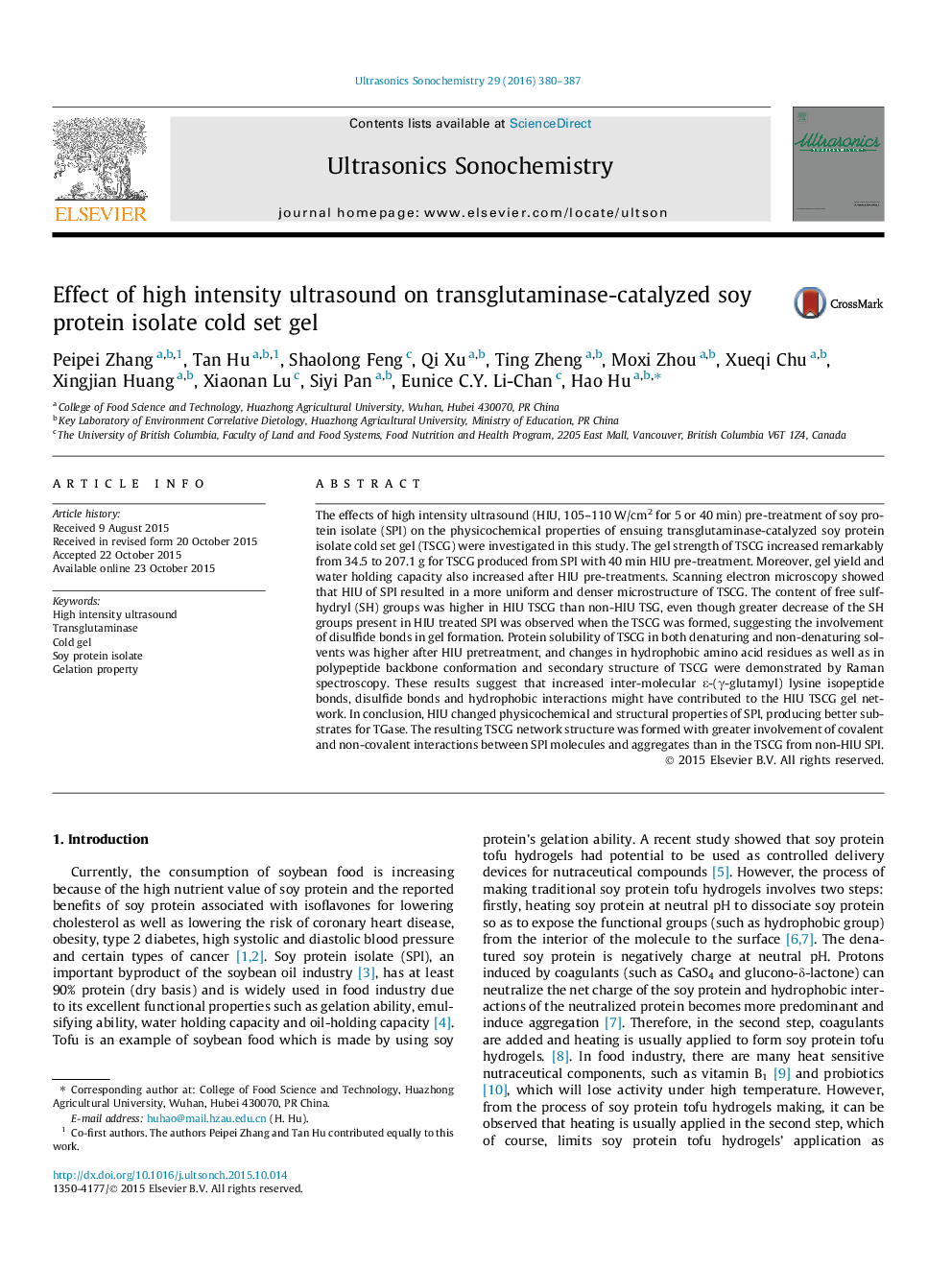| کد مقاله | کد نشریه | سال انتشار | مقاله انگلیسی | نسخه تمام متن |
|---|---|---|---|---|
| 1265884 | 1496875 | 2016 | 8 صفحه PDF | دانلود رایگان |
• TGase-catalyzed soy protein cold set gels (TSCGs) were formed at low temperature.
• High intensity ultrasound (HIU) of SPI changed physicochemical properties of TSCG.
• HIU increased the gel strength, water holding capacity and gel yield of TSCG.
• HIU changed the microstructure and conformational structure of TSCG.
• More inter-molecular covalent and non-covalent bonds may be formed after HIU.
The effects of high intensity ultrasound (HIU, 105–110 W/cm2 for 5 or 40 min) pre-treatment of soy protein isolate (SPI) on the physicochemical properties of ensuing transglutaminase-catalyzed soy protein isolate cold set gel (TSCG) were investigated in this study. The gel strength of TSCG increased remarkably from 34.5 to 207.1 g for TSCG produced from SPI with 40 min HIU pre-treatment. Moreover, gel yield and water holding capacity also increased after HIU pre-treatments. Scanning electron microscopy showed that HIU of SPI resulted in a more uniform and denser microstructure of TSCG. The content of free sulfhydryl (SH) groups was higher in HIU TSCG than non-HIU TSG, even though greater decrease of the SH groups present in HIU treated SPI was observed when the TSCG was formed, suggesting the involvement of disulfide bonds in gel formation. Protein solubility of TSCG in both denaturing and non-denaturing solvents was higher after HIU pretreatment, and changes in hydrophobic amino acid residues as well as in polypeptide backbone conformation and secondary structure of TSCG were demonstrated by Raman spectroscopy. These results suggest that increased inter-molecular ε-(γ-glutamyl) lysine isopeptide bonds, disulfide bonds and hydrophobic interactions might have contributed to the HIU TSCG gel network. In conclusion, HIU changed physicochemical and structural properties of SPI, producing better substrates for TGase. The resulting TSCG network structure was formed with greater involvement of covalent and non-covalent interactions between SPI molecules and aggregates than in the TSCG from non-HIU SPI.
Figure optionsDownload as PowerPoint slide
Journal: Ultrasonics Sonochemistry - Volume 29, March 2016, Pages 380–387
